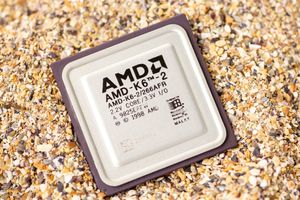
Children’s apparel manufacturer Carter’s (NYSE: CRI) announced better-than-expected revenue in Q2 CY2025, with sales up 3.7% year on year to $585.3 million. Its non-GAAP profit of $0.17 per share was 54.6% below analysts’ consensus estimates.
Is now the time to buy CRI? Find out in our full research report (it’s free).
Carter's (CRI) Q2 CY2025 Highlights:
- Revenue: $585.3 million vs analyst estimates of $566.3 million (3.7% year-on-year growth, 3.4% beat)
- Adjusted EPS: $0.17 vs analyst expectations of $0.37 (54.6% miss)
- Adjusted EBITDA: $26.5 million vs analyst estimates of $39.95 million (4.5% margin, 33.7% miss)
- Operating Margin: 0.7%, down from 7% in the same quarter last year
- Locations: 1,065 at quarter end, up from 1,027 in the same quarter last year
- Same-Store Sales rose 2.2% year on year (-11.8% in the same quarter last year)
- Market Capitalization: $906.4 million
StockStory’s Take
Carter’s second quarter results were met with a significant negative market reaction, largely due to profit margins falling well short of Wall Street’s expectations despite sales growth. Management attributed the underperformance to increased investments in retail pricing, higher store-related expenses, and ongoing challenges from tariffs and promotional activity. CFO Richard Westenberger described the quarter as “down considerably versus a year ago,” emphasizing that pricing investments and competitive discounting weighed on margins. CEO Doug Palladini also cited elevated costs from store expansion and maintenance as contributing factors.
Looking ahead, Carter’s leadership outlined a strategy to offset escalating tariff costs and drive profitability through targeted price increases, greater supply chain agility, and a more analytical approach to store management. Management acknowledged ongoing uncertainty around tariffs, but emphasized aggressive actions to share costs with vendors and wholesale partners while raising prices where feasible. Palladini stated, “We have substantial and meaningful reasons to believe that we can return to growth that…can be profitable and sustained over time,” but cautioned that short-term margin pressures are likely to persist until these initiatives take full effect.
Key Insights from Management’s Remarks
Management attributed the quarter’s revenue gains to growth in U.S. retail and international segments, but noted that profitability declined sharply due to pricing actions, tariff costs, and higher expenses.
- Tariff headwinds intensifying: The company faced growing uncertainty from new and proposed tariffs, which have not yet fully impacted results but are expected to meaningfully affect profits in the coming quarters. Westenberger noted that Carter’s is preparing for a “world with higher and more permanent tariffs.”
- Store portfolio reevaluation: Carter’s is implementing a proprietary analytics-driven approach to evaluating its store fleet, identifying approximately 100 stores for closure as leases expire. The aim is to increase productivity and focus capital on high-performing locations.
- Investment in pricing and promotions: Carter’s invested in lower prices on key value items and increased promotional activity to remain competitive, particularly in the U.S. retail segment. These actions hurt gross margins in Q2, but management does not anticipate further broad price reductions.
- Segment performance divergence: Growth was led by U.S. retail and international sales (notably Canada and Mexico), while wholesale remained flat. The baby category, especially, showed double-digit growth, and new customer acquisition improved.
- New product and brand momentum: Emerging brands like Little Planet and Purely Soft delivered strong sales, commanding higher prices and driving new, higher-value customer acquisitions. Otter Avenue was launched as a new toddler-focused brand, with early signs described as “highly encouraging.”
Drivers of Future Performance
Carter’s outlook is shaped by the need to pass on higher tariff costs, optimize its store portfolio, and accelerate new product development while carefully managing consumer demand.
- Tariff mitigation strategy: Management plans to offset increased tariff expenses by raising prices, shifting sourcing, and negotiating cost-sharing with vendors and wholesale partners. However, they expect only partial mitigation in the near term, with full offsets targeted for 2026 and beyond.
- Retail and product investments: The company is expanding its best-performing product lines and increasing marketing spend to drive store traffic and loyalty. Recent investments in product newness and digital experiences are intended to boost frequency and value per customer, but may pressure margins in the short term.
- Store rationalization and analytics: By closing underperforming stores and reallocating resources to higher-performing locations, Carter’s aims to improve fleet productivity. A new segmentation strategy and proprietary algorithms are being used to refine site selection and inventory allocation, supporting a focus on long-term profitable growth.
Catalysts in Upcoming Quarters
In the quarters ahead, our analysts will be watching (1) Carter’s ability to raise prices without materially impacting unit volumes, (2) the pace and impact of store closures and relocations on profitability, and (3) traction of new brands and product lines in both retail and wholesale channels. The effectiveness of tariff mitigation strategies and progress on cost management will also be critical markers for assessing the company’s turnaround.
Carter's currently trades at $24.61, down from $32.72 just before the earnings. Is there an opportunity in the stock?Find out in our full research report (it’s free).
Now Could Be The Perfect Time To Invest In These Stocks
Donald Trump’s April 2025 "Liberation Day" tariffs sent markets into a tailspin, but stocks have since rebounded strongly, proving that knee-jerk reactions often create the best buying opportunities.
The smart money is already positioning for the next leg up. Don’t miss out on the recovery - check out our Top 9 Market-Beating Stocks. This is a curated list of our High Quality stocks that have generated a market-beating return of 183% over the last five years (as of March 31st 2025).
Stocks that made our list in 2020 include now familiar names such as Nvidia (+1,545% between March 2020 and March 2025) as well as under-the-radar businesses like the once-micro-cap company Kadant (+351% five-year return). Find your next big winner with StockStory today.
StockStory is growing and hiring equity analyst and marketing roles. Are you a 0 to 1 builder passionate about the markets and AI? See the open roles here.






